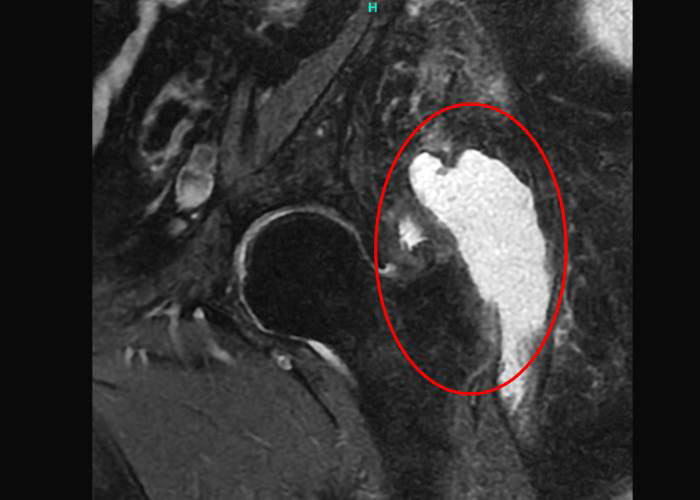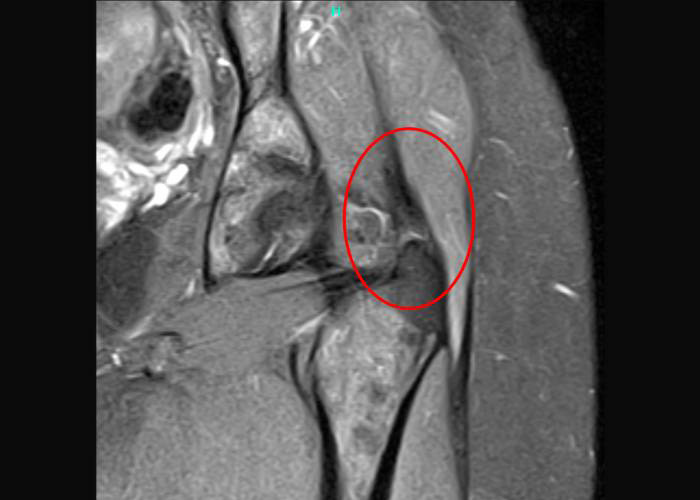Hip Abductor Tendon Tear Specialist
If you have a degenerative condition of the hip or have had previous hip injuries, you may be more likely to suffer a gluteus tear, also called a hip abductor tendon tear. Gluteal tears can cause painful symptoms on the outside of the hip and in the buttocks. Hip abductor tear specialist, Doctor Prem Ramkumar, is located in Long Beach and serves patients in Los Angeles, Orange County, and surrounding Southern California areas who are experiencing the painful symptoms of a hip abductor tear. Contact Dr. Ramkumar’s team today!

What is a hip abductor tendon tear?
Two of the muscles that make up the outer buttocks of the body are the gluteus medius and gluteus minimus. They are thick muscles involved in the abduction of the hip, helping it move out to the side. If you tear one or both of these muscles, it will cause pain and an abnormal gait. Dr. Prem Ramkumar, hip abductor tendon tears specialist, is located in Long Beach and serves patients in Los Angeles, Orange County, and surrounding Southern California areas.


What causes a hip abductor tendon tear?
As our bodies age, the gluteus medius and minimus can become inflamed, leading to what’s known as trochanteric bursitis. In some patients, this causes either a partial-thickness tear (tendon is partially torn) or a full-thickness tear (tendon is fully torn) in the abductor tendon. These tears can occur due to underlying anatomy, trauma, and/or attrition.
What are the symptoms of abductor tendon tears?
Common symptoms of hip abductor tendon tears include:
- Deep throbbing on the outside of the hip and/or buttocks
- Limited mobility
- Pain when sleeping on the hip
- Limp with a pelvic drop towards the non-injured side
You may also suffer from lower back pain, leading you to believe you have a back injury instead of an issue with your hip.
What are the grades of hip abductor tendon tears?
Dr. Ramkumar grades gluteus medius and minimus tears based on the severity of the tear:
- Grade 1: Mild pain with no loss of mobility
- Grade 2: Partial tear with mild pain; patients may experience a loss in strength and flexibility
- Grade 3: Full/complete tear; pain is more severe, with loss of strength, difficulty moving the affected leg, and limited mobility
How are abductor tendon tears diagnosed?
Hip abductor tendon tears are generally diagnosed with a history and physical exam. Dr. Ramkumar will apply pressure to the hip area and perform a strength testing exam to determine any weakness in the hip. In addition, he may ask you to walk since an abnormal gait is one of the symptoms of abductor tendon tears. X-rays and other diagnostic tools, such as an MRI, may help better characterize the condition.
How are abductor tendon tears treated?
Dr. Ramkumar starts with conservative non-surgical treatments first. They may include:
- Icing the hip joint – To reduce pain and swelling
- NSAIDs – Drugs such as Ibuprofen may help reduce pain and inflammation.
- Activity modification – Avoid activities that cause symptoms so the abductor tendon tear heals.
- Biologic injections – PRP in lower grade tears have shown to be helpful in aiding the reparative process; this is not helpful when the tear is complete.
If non-surgical treatments do not relieve the pain and symptoms persist, surgery may be necessary to fix an abductor tendon tear. Dr. Ramkumar will repair the gluteus medius and/or gluteus minimus tear using an open surgical approach. During the procedures, he uses sutures to reattach the abductor tendon tears.
What is the recovery time after an abductor tendon tear repair?
Recovery times from abductor tender tear repairs vary from patient to patient and depend on how well you follow the post-op recovery protocol given by Dr. Ramkumar. You will be limited weight bearing for the first 4 weeks. You can expect to use a brace and crutches for about six weeks following surgery, and tissue healing takes about three months. You will have to work on training your gait around 6 weeks. You begin physical therapy right after the surgery to help restore function and mobility to the hip joint.

